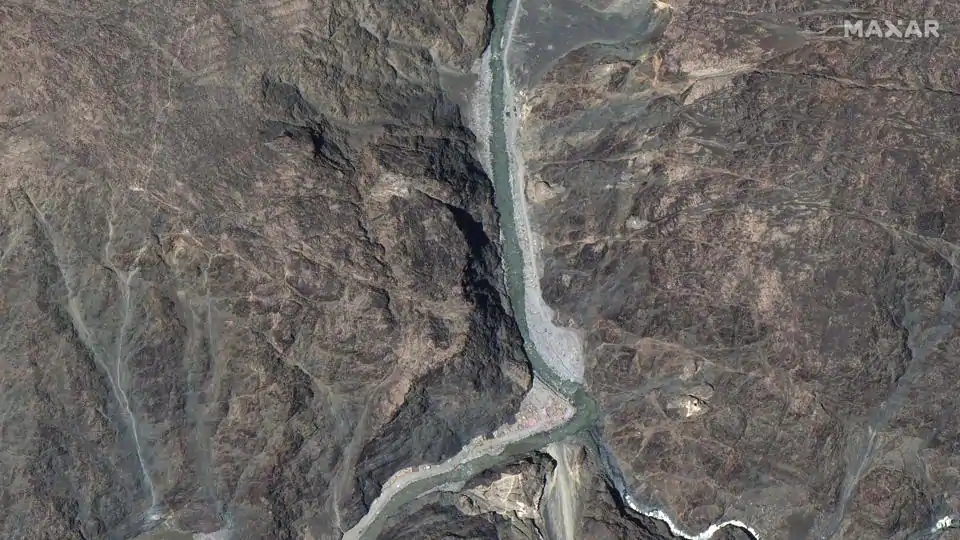
SOURCE: HT
China is rapidly upgrading infantry weaponry and logistical support for its border troops stationed along the Line of Actual Control (LAC) amid the ongoing boundary tensions with India in eastern Ladakh, state media reported.
The People’s Liberation Army’s (PLA) Western Theatre Command (WAC), under which the long and disputed India-China border falls, is commissioning new and precision-based weapons and upgraded winter clothes and permanent barracks for its troops.
The upgrades come in the backdrop of the months-long stand-off in eastern Ladakh, which has seen both sides amassing troops and equipment along the LAC.
India has consistently opposed presence of PLA troops across LAC. External affairs minister S Jaishankar said last week that it presents a critical security challenge to India.
“It has obviously had a very deep public impact and a very major political impact and it has left the relationship profoundly disturbed,” he said, referring to the large numbers of Chinese forces deployed at friction points on the LAC. “I haven’t got a reasonable explanation…from them [Chinese] on this matter,” he said, adding that the concentration of Chinese troops at the disputed border represented a “critical security challenge”.
However, it seems clear that the PLA is equipping and readying itself for the long-haul in areas of Tibet and Xinjiang, which witnesses some of the harshest winters in the world.
By all indications, even if the current border friction is resolved and troops disengage – even if partially – PLA troops are unlikely to fully pull back as they are expected to be prepared for the winter chill.
Besides heavy artillery, the PLA is focussing on arming its soldiers with light, precision-based infantry weapons.
The news comes as the two sides are set to hold the eighth round of military-diplomatic talks next week on disengagement in the Ladakh theatre.
Earlier this week, the PLA Tibet Military Command announced that its soldiers, especially from special operation forces, will receive new QBU-191precision rifles with a 30-bullet magazine and variable long-distance magnification.
The new gun is expected to replace the QBU-88 sniper rifle currently used by the troops, state media reported.
The Tibetan plateau’s extreme cold will help test the rifle’s performance in extreme environments, collecting first-hand data for its future optimisation, state media reported.
Earlier, this month the Tibet command also tested, for the first time, the latest “truck-based multiple rocket-propelled mine launchers” at high altitude.
The drills were carried out at over 14,000 feet, state media reports said.
Not only weapons, the PLA is also getting itself enough layers to keep its soldiers warm in the coming months.
On Tuesday, the PLA Daily, the PLA’s official newspaper, reported that the powerful Central Military Commission – headed by President Xi Jinping – has commissioned specially-made quilts, tents, inner-wear and boots for Chinese border troops.
These new sets of clothing can withstand temperatures as low as -40-degree centigrade.
A Chinese clothing manufacturer which makes winter wear for China’s national mountaineering team members – including those climbing Mount Everest – has developed the new quilts and tents for PLA soldiers.
“The clothing supplier urgently developed and produced a batch of new cold-proof quilts for the plateau border troops. This batch of materials is specially tailored for military officers and soldiers…good thermal insulation effect, and light overall material. They will be delivered to frontline officers and soldiers in the near future, providing strong guarantee for completing various training and duty tasks under extreme cold conditions,” the PLA Daily report said.
Besides the tents and sleeping bags, the soldiers will soon have new cold-proof down jackets, boots and insulated inner-wear to withstand severe winter.
The new barracks for PLA soldiers in the remote Ngari area of the Tibet Autonomous Region (TAR) at nearly 15,000 feet come equipped with new technologies to conserve heat and are built to ensure more oxygen supply for troops.
“While facilitating the daily life of officers and soldiers to the greatest extent, the new generation of plateau barracks also enhances the function of training and preparation for war,” the report added.
Recently, the PLA’s Army Engineering University developed and handed over “ready-to-assemble” thermal shelters for border troops.
The shelters comprising dormitories, canteens, washing rooms, toilets, warehouses, microgrids and heating equipment are expected to function in temperatures as low as -55 C and at an altitude over 15000 feet, the PLA Daily reported.






